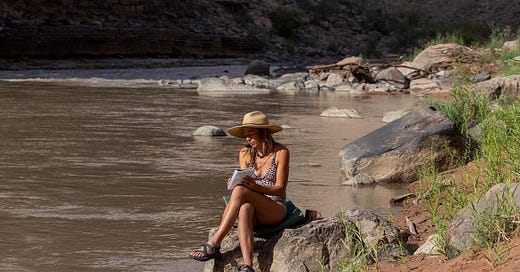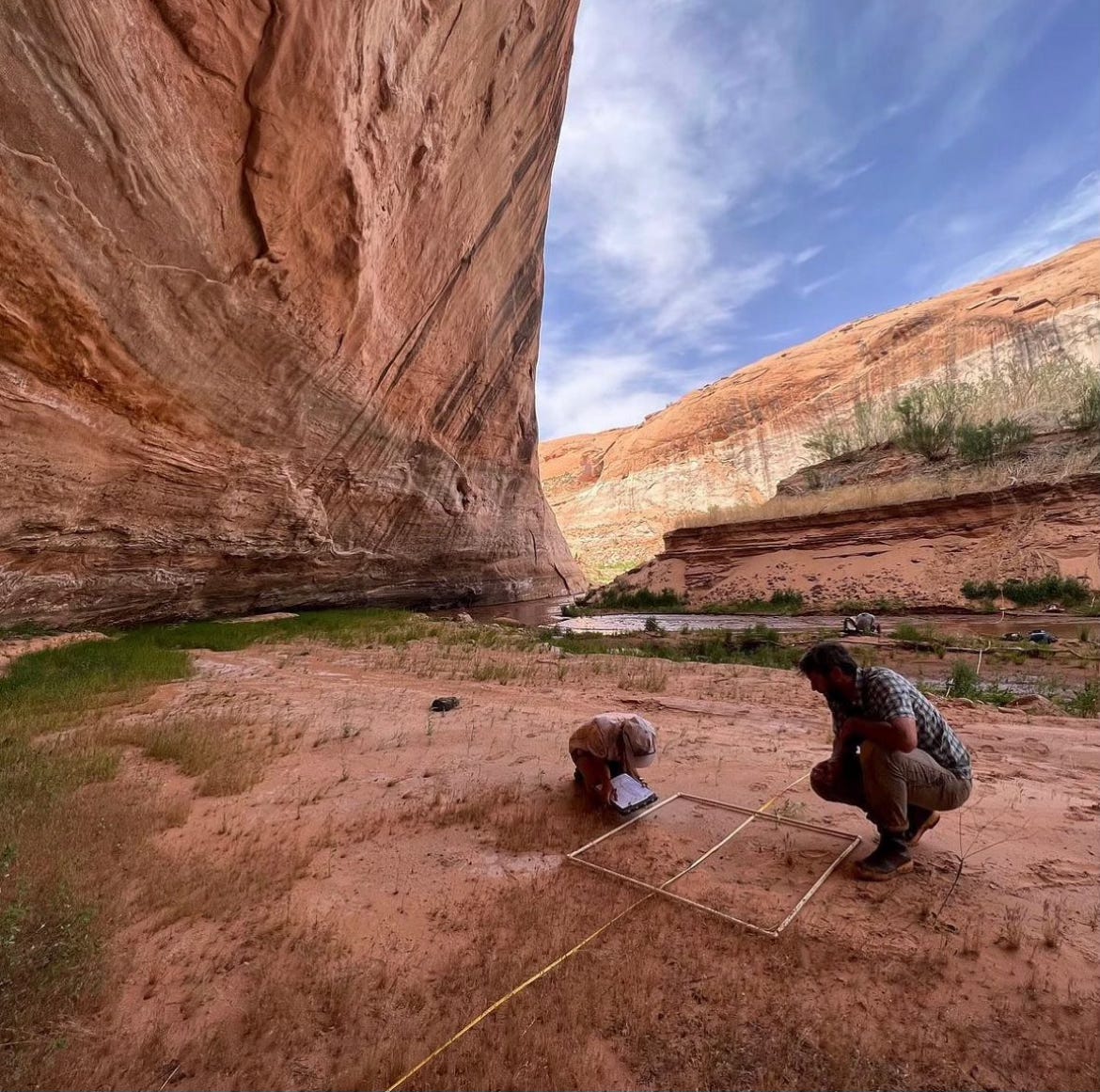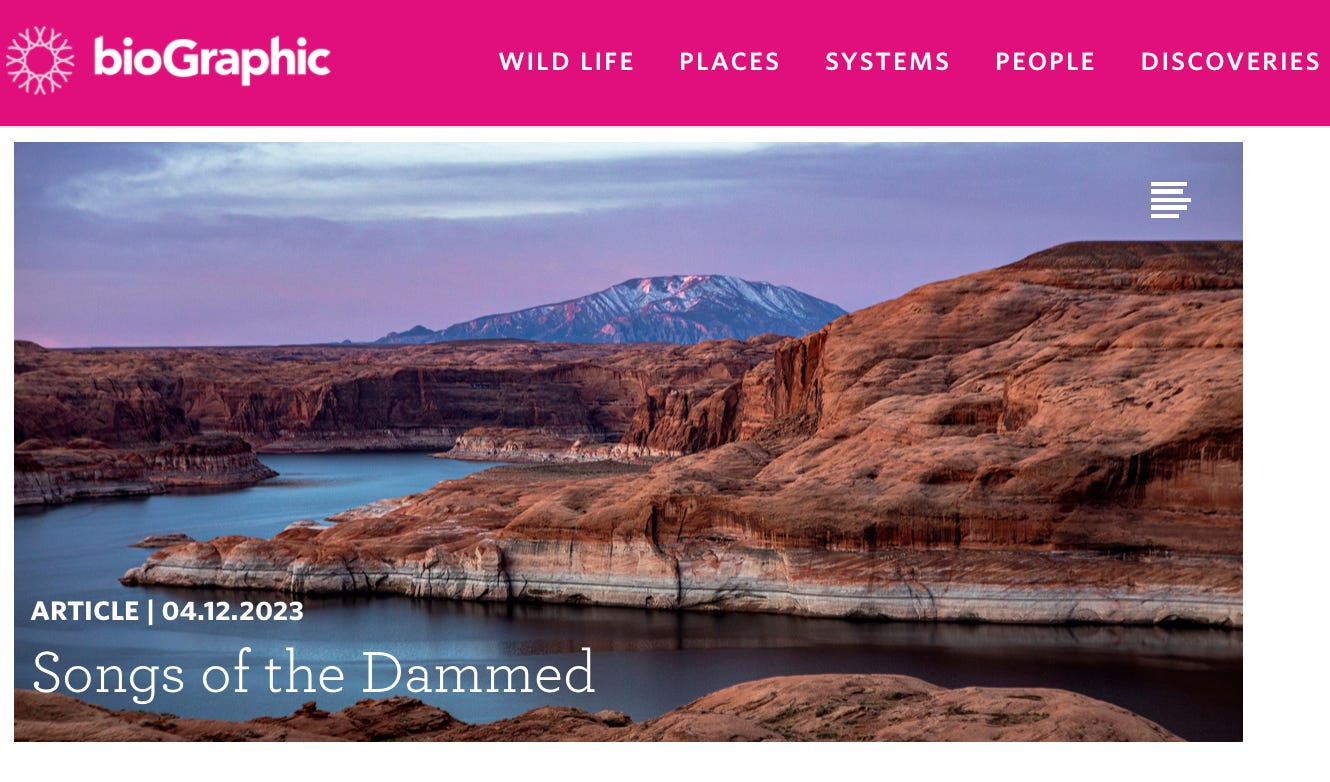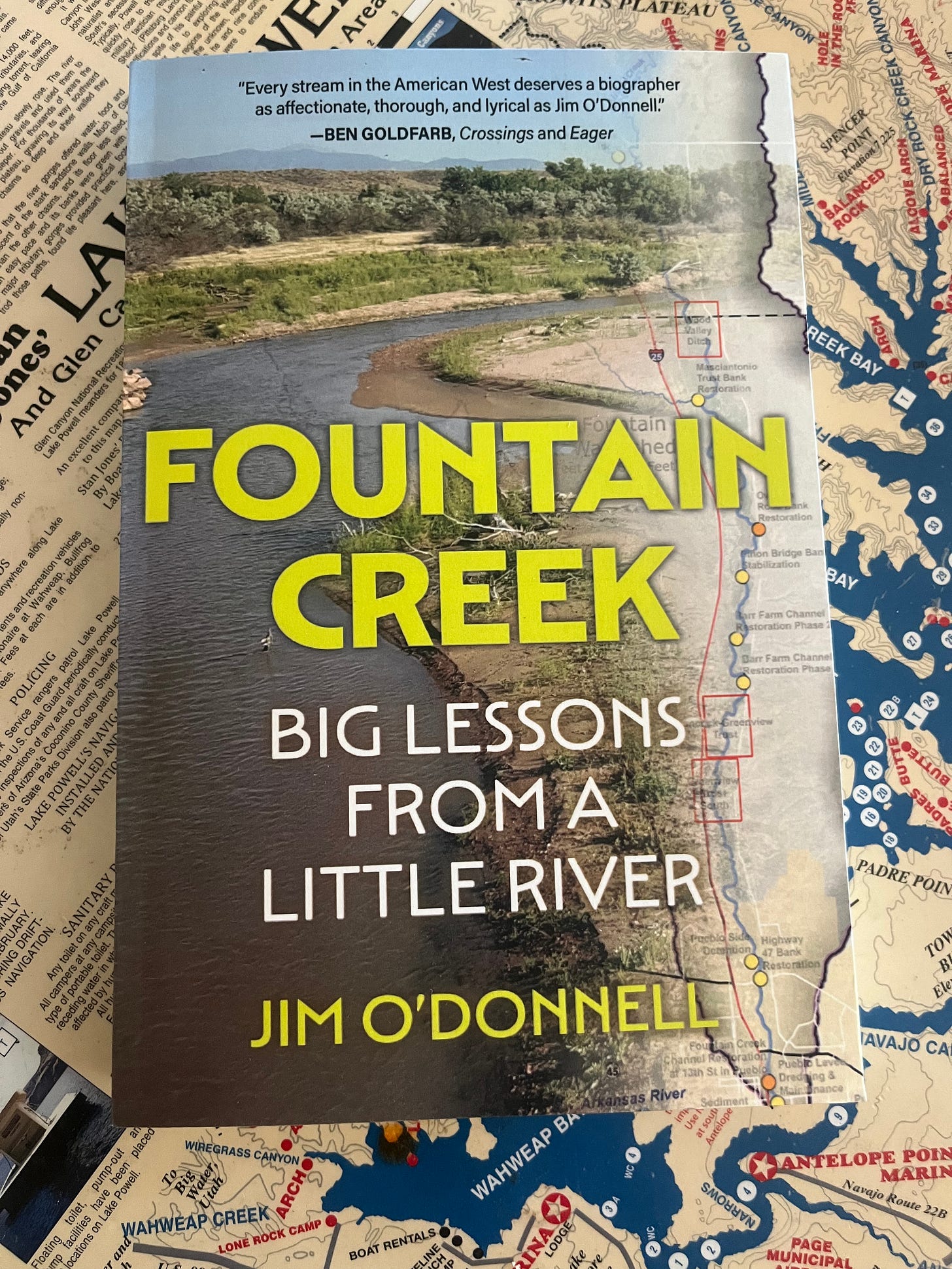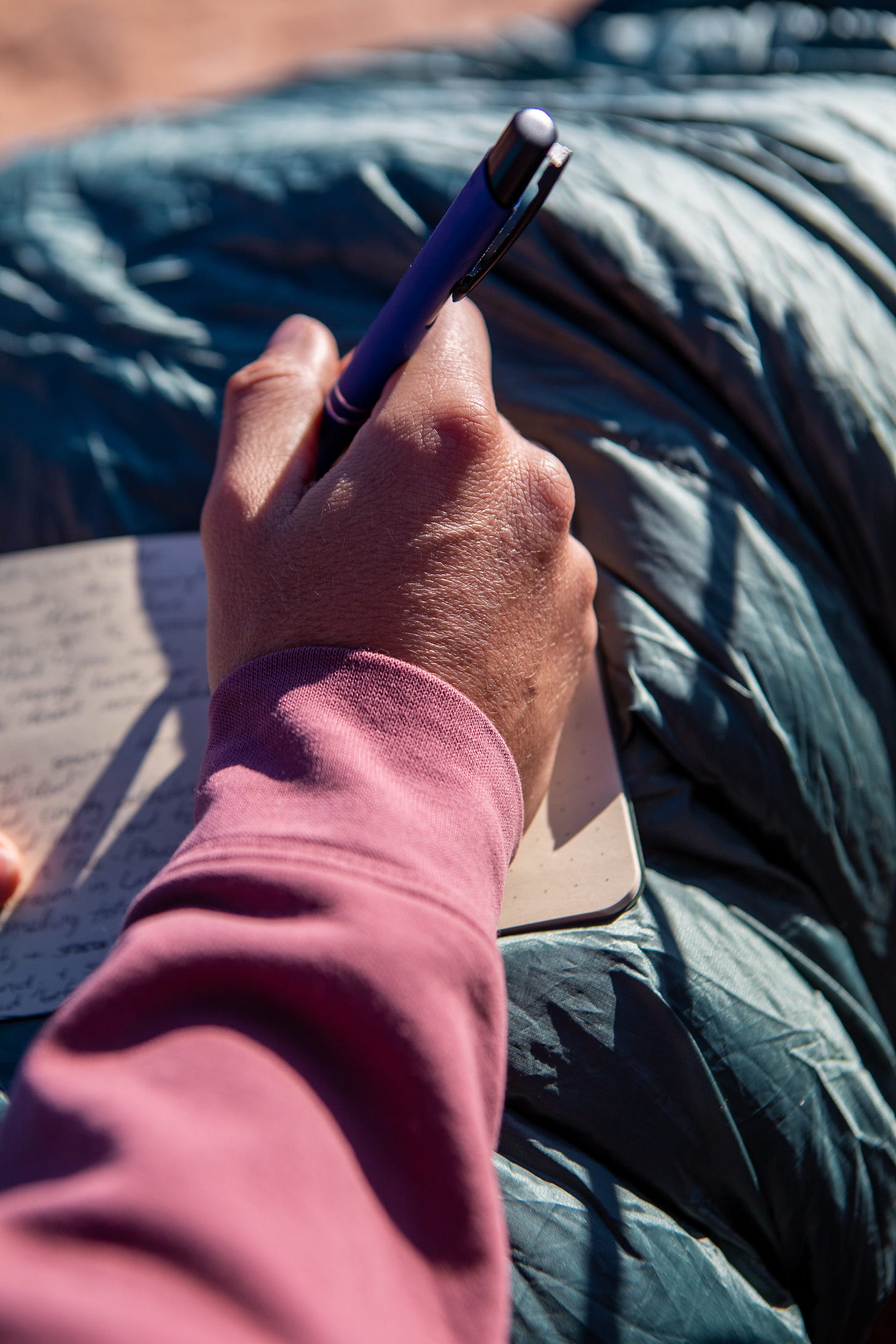Much has been written and hypothesized about how the current media landscape affected the 2024 elections. And how changes to it from the incoming administration could impact books, journalism, social media, and democracy.
While this has always been true throughout history, how people consume media and what messages reach them, largely shaped by algorithms, is rapidly changing. Constantly. Our energy output cannot even keep pace with AI, which is now scraping the work of writers to train itself. Yikes!
Between online web platforms and social media, it’s a dice roll on what information reaches you, and how it’s presented is as affecting as what is written. All too often headlines, or clickbait, are often the only flashes of information people bother to read. And with a deluge of minute-by-minute information available, it’s hard to blame folks for that.
What to do?
Spoiler: I don’t have an answer. It’s above my pay grade. Most things are––which is why I am preparing to be out backpacking and living out of my truck all winter (more on that in a future post). This is not to say online press is all bad. It’s not. For very important stories and information and disseminated rapidly online to the great benefit of society. What I do believe, is that there has never been a more critical time to support PRINT MEDIA.
A few reasons why:
Print media is processed at a much slower real-time scale. There are draft stages, multiple rounds of content and copy edits, and fact-checking. All of this applies to online stories, but in my experience, it can be much more rushed. Print has two slow-down factors on its side to make it more thorough––the layout stage and publication timelines.
This of course means that print is not the best way to get breaking news. You already know that. But its safe to say that many things that come out in print have been given deep research, thought, attention, and editing that is not afforded to most, not all, online stories.
Books take even longer.
Rebecca Solnit explains:
“An essay, a book, is one statement in a long conversation you could call culture or history; you are answering something or questioning something that may have fallen silent long ago, and the response to your words may come long after you’re gone and never reach your ears, if anyone hears you in the first place.
After all, this is how it’s been for so many books that count, books that didn’t shake the world when they first appeared but blossomed later. This is a model for how indirect effect can be, how delayed, how invisible; no one is more hopeful than a writer, no one is a bigger gambler.” (Solnit, Hope in the Dark, p. 107.)
Yes, there is misinformation that can be spread in print. But it removes the rushed fast-food aesthetic of the daily deluge of news du jour. In the frenetic mindset that everything of significance must happen first, right now, all at once, and in real-time we forget the pace of nature, including the pace of human nature. There is a need to not just consume but to pace oneself and digest. Whatever happens right now, not only creates changes today, the ripples extend far beyond our view.
Slower methods of writing––by pen and print––honor this reality.
I will never be the first person to break a story––even if I am one of the few folks living beside Glen Canyon’s shoreline watching its decline happen in real-time. I enjoy the endurance endeavor of investigation. I am a Scorpio, the zodiac’s deep diver of undercurrents. Writing is not just a mode of sharing stories with others, it is, like walking the wildest places, a means of exploring something. Joan Didion wrote, “I write entirely to find out what I'm thinking, what I'm looking at, what I see and what it means. What I want and what I fear.” I also write to find out what the earth is trying to tell me. This includes plants, animals, water, air, and yes, humans.
As an athlete and physical person, I prefer the act of writing with pen on paper. Surrounding myself in the landscapes I write about, or that soothe me when the going is tough. Best of all, AI cannot scrape anything written in the flesh offline!
There are times I fear I am falling behind. Every day, other writers are publishing more stories, faster, for bigger outlets. Were it not for the intrinsic underpinnings of why I write, I am sure I could find a thousand reasons to stop pursuing this most uncertain of paths that is freelance writing. But then again, when I step outside, I rarely follow a trail. I wander off into what is to me, the unknown so that I can find my way through what the land and rivers have to teach me.
Many of my stories take months and years to see the light of day. That is, to be read by other humans who thumb the pages between their hands. I am grateful for Substack as a means to stay in touch with some of those readers, like you. Those of you who have subscribed, you have helped provide a small supplement to my erratic freelance income. THANK YOU! Having a place to skip stones of inspiration is a boon to those dry spells where hauling water across a mesa sounds more productive than writing alone once again. And I must note, that hauling water across an expanse of desert is far more important and enthralling most of the time.
This is especially true when one dives further into the economics of media. It seems most publications these days are owned by a gazillionaire or are struggling non-profits. The ad - based model is struggling mightily to compete with social media. The subscription model is on the rise, but many are being disgruntled about having to pay for something they perceive should be free.
Consider, that if it’s in print, the cost goes up exponentially to produce a magazine, newspaper, or book. These costs alone have caused numerous print publications to shutter in recent years. That tactile, physical, and even olfactory experience of reading something real is, to me, priceless. I cannot say the same for scrolling.
If you are of a certain age do you remember newspaper delivery? Not only did you buy the news, you paid the “paperboy” (paper person is more accurate, but this is what the history books will say about those archaic times). Each quality article you read was worked on by a writer, editorial team, a photographer, a layout team, and a marketing team to help disseminate it.
The writers are usually (not always) the lowest rung on the pay scale. A quick google search and you will see the not so secret $1 per word rate that has not gone up with inflation in many decades. But hey, in exchange for their labor, the writers get all the fame a notoriety, right? And also all the hate mail! Especially if the editorial board decides on a ghastly title to grab more attention. (This is infinitely worse if an article is published or shared online.)
Paying for news subscriptions feels anathema in my income bracket. And more so, because I am paying into outlets and publishers that don’t pay writers enough. Yet I know, because I am a writer, how valuable paying for quality stories and information is. I understand that it adds to the perspective, research, and development of my writing. A subscription to a regional news outlet adds far more to my life than an Amazon or Hulu subscription. Ask yourself the same?
If your heart says, “YES, I need the slow-cooked meaty brothy stories toiled over by independent minds for months and years at a time,” may I suggest a menu of outlets and authors to subscribe to for a land-to-table taste of the West’s heart. Many of these outlets also publish my stories and the work of writers I admire. Just think, instead of trolling the Netflix page, you could be devouring words of substance. Best of all, you get the enjoyment of actually picking something up from your mailbox––a dopamine rush dosed out a few times a year instead of the numbing stream experienced daily on your phone. Who’s hungry?
Since 1925, Arizona Highways has published gorgeous travel writing and photographs covering the state’s history, art, culture, landscapes, wildlife, and tourism. It’s an honor to be part of the legacy of writers and photographers who have contributed to the magazine for nearly 100 years: Ansel Adams, Charles Bowden, Craig Childs, Jack Dykinga, Neil Judd, Dawn Kish, Katie Lee, and Annette McGivney. The editorial team is best in show and feels like a family––a true blessing for us lone-wolf freelancers. The print magazine comes out monthly.
bioGraphic is powered by the California Academy of Sciences, a renowned scientific and educational institution dedicated to regenerating the natural world through science, learning, and collaboration. The outlet just announced the acquisition of Hakai Magazine which covers coastal environments and people in a similar vein. Although bioGraphic is published online, its editorial process and fact-checking are rigorous. I can attest it is put through those paces as much as anything in print. The gorgeous layout is a joy to read.
Sierra Magazine
This year, editor Paul Rauber retired from Sierra Magazine after 34 years. This story I wrote about Glen Canyon’s damaged infrastructure was the last he edited. That I am 37 years old reminds me of the longevity one can have in this mad profession if you want to make a difference. Paul no doubt has, and his legacy at Sierra Magazine reflects the quality contributors who continue to report unabashedly FOR the environment. The print magazine comes out 4 times a year.
Torrey House Press
The line-up of Torrey House Press authors sums up the quality books produced by this indie publisher. But it’s not just production. THP is truly a community of authors who care deeply about the West’s land, water, wildlife, people, AND literature. It is truly an honor to have Path of Light published by them. Just today, I received a copy of Fountain Creek by Jim O’Donnell. Not only am I eager to read about one of the West’s overlooked waterways, but I relish savoring the words of an author who has also supported my work. As a non-profit publisher, donations are what print future books on new pages.
A few more:
High Country News is the premier journalism outlet in the West. The print edition comes out four times a year, and the online news is one of the few things worth scrolling for.
Ian James’s water and climate coverage in The Los Angeles Times is among the best and the reason I subscribe to the paper.
There are four Substacks I have paid subscriptions for: The Land Desk, Tom Ryan, An Irritable Metís, Western Water Notes, Taking Bearings. Why? The well-written and researched material, ranging from public land and water to Indigenous and U.S. history, provides me with information that helps my writing, and I believe anything of that quality and service should be paid for. On a lighter note, Tom Ryan’s musings from his coddiwomples remind me that the best moments in life, and to write about, are when we simply put one foot in front of the other. A daily reminder from him is a golden ray.
A final note. There is far more benefit to writing than the supposed notoriety that comes from publishing your work. We’d all be a lot better off if every day, or even every week, we put pen to paper and gushed our thoughts, questions, yearnings, ideas, rants, and stick figures. This is as fine a time as ever to buy yourself a notebook and subscribe to a investigation of your own perception and curiosities about the world.
Now excuse me, my notebook is scratching at the door and begging me for a very long walk.

